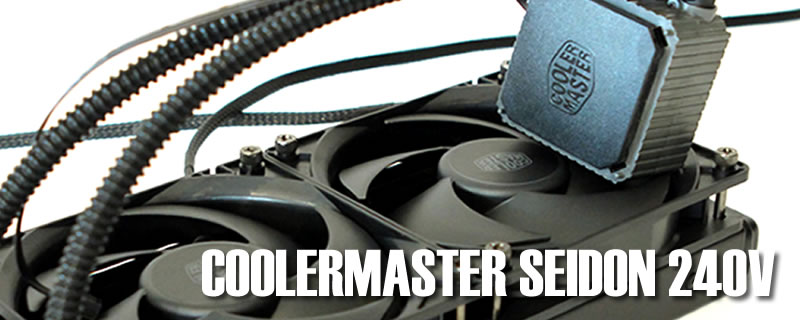CoolerMaster Seidon 240V AIO Watercooling Review
Conclusion
It’s been so long since we’ve looked at an AIO that we’ve almost forgotten just how fantastic these things are. Â Just imagine five or so years ago when if you wanted a water cooled system you pretty much had to go custom loop. Â Yes there were some AIOs out there, but they were clumsy and noisy and expensive. Â Not so the CoolerMaster Seidon 240V. Â In fact it’s about as far away from clumsy, noisy and expensive as it’s possible to be. Â Why do we say this, well let’s look at the evidence shall we.
First up, there’s the build quality. Â Yes we know this is relatively easy to talk about, and for the greater part, most manufacturers have this sorted, but believe us when we say it’s not unusual to un-box an AIO and find that there’s a portion of the radiator where all the fins are bent in or dented. Â Now, we know this doesn’t measurably affect performance, but at the same time, if you’ve just spooned out a fair few moolas for the AIO of your dreams, you’re going to be pretty forked off when you un-box it and find it looking like another mans hands have already been there. Â We think you know what we’re getting at here.
So the quality is good, but what of the performance? Â Well the observant among you well have noticed that the graphs we’ve shown aren’t from the new test rig. Â Yup, we flamingo’d up a bit there guys. Â What’s a Flamingo up? Â Well it’s like a cock up, only bigger, and pinker! Â That’s right chaps and lady chaps, having built the cooler into the new test rig, we realised we didn’t have any other relevant data (other AIO’s) to compare it to. Â So what did we do? Well we broke the seal on the mothballed socket 2011 Test Trooper rig and sparked the old girl back into life. Â The results, we’re pleased to say were rather pleasing, with the Seidon 240V making a good fist of things across the board, suffice to say having seen its performance with the 2011 we’ll be looking forward to seeing it perform on the new test rig.
The numbers though only tell half the story. Â Forgive us for being cynical, but when we looked at the dB(A) levels for the fans and compared them to the rated 2400RPM speeds we raised more than a metaphorical eyebrow. Â Thing is, the Seidon 240V is actually really quiet, and we mean really quiet, especially when we test at the full 12V. Â The fans themselves emit little more than a gentle hum, but turn them off and listen to the pump on its own and you’re going to be straining your hearing to pick up its sonic signature. Â In simple terms, this is one quiet Cooler, and that’s at 12v, just think how quiet it will be if you link it up the way most will and plug it into a PWM on your motherboard so it varies the pump speed.
At the time of going to press, we’ve not got a solid price on the Seidon 240V despite asking. Â Based on CoolerMaster’s pricing of previous coolers in the Seidon line though we’re not expecting it to cost an arm and a leg, and as such it’s most likely going to represent reasonable value for money. Â Granted there are better performing coolers out there, but we’re willing to bet there’s not many that perform well at this price point. Â We’re giving the Seidon 240V an OC3D approved award, and we strongly expect it to perform well on the new test rig. Â Rest assured though we’ll be putting it through its paces once more.Â

You can discuss your thoughts about the CoolerMaster Seidon 240V AIO Watercooling Review on the OC3D Forums.



